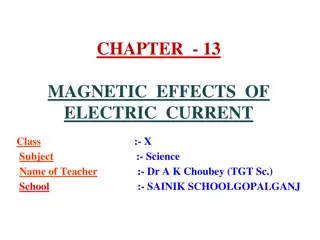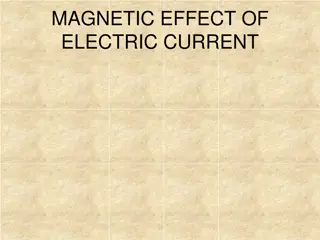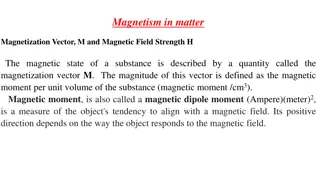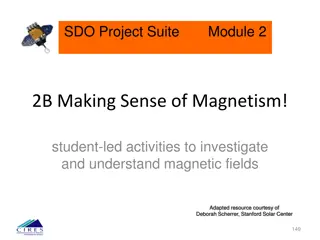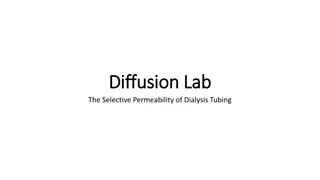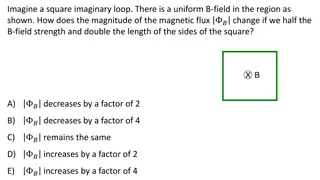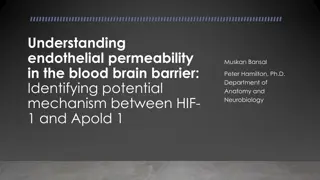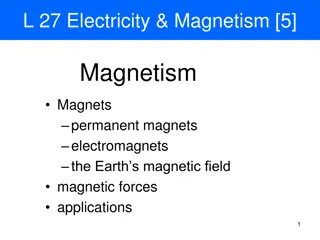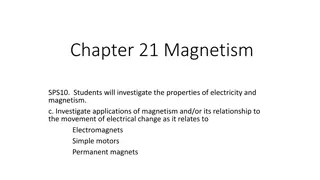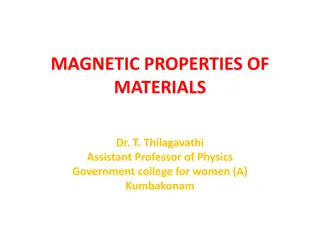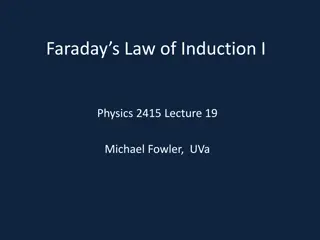Understanding Magnetic Permeability and Electrodynamics in Macroscopic Systems
Exploring the dispersion of magnetic permeability, permittivity, and magnetization in different frequency ranges. Discussing conditions for neglecting certain parameters and the impact of electromagnetic waves on small body dimensions. Highlighting the importance of magnetization in macroscopic electrodynamics and optical frequency limitations.
Download Presentation

Please find below an Image/Link to download the presentation.
The content on the website is provided AS IS for your information and personal use only. It may not be sold, licensed, or shared on other websites without obtaining consent from the author. Download presentation by click this link. If you encounter any issues during the download, it is possible that the publisher has removed the file from their server.
E N D
Presentation Transcript
Dispersion of magnetic permeability LL8 section 79
Permittivity () approaches unity at UV frequencies. Permeability ( ) approaches unity at much lower frequencies (microwaves). Then magnetic induction B = H = H And magnetization (magnetic moment per unit volume) M = (B H)/4 = 0
The total magnetic moment of a body is (29.9) This is the microscopic current density averaged over atomic dimensions Maxwell equations Substract 4 M = (B H) -
A result of magnetostatics. There were no time- dependent electric fields
What conditions allow neglect of For a given , a small body dimension l gives large spatial derivatives in So that this term would dominate over dP/dt. A weak electric field E would also give a small P, but this cannot be satisfied for electromagnetic waves where E ~ H.
To find the condition on where dP/dt can be neglected and magnetization can be important, place the body on the axis of a solenoid with variable current. Then the electric field E appears only due to induction This should be small compared to c curl M
Magnetization Magnetic susceptibility To get We need
There is another constraint: We are working in the limit where macroscopic electrodynamics is applicable. Magnetic susceptibility has meaning only in that limit. The body has to be bigger than one atom for averaging over atomic dimensions to be possible. l >> a Combine both conditions: Macroscopic ED dP/dt << c curl M
In the optical range, we can estimate magnitudes as See footnote in text Electron velocity Atomic oscillating dipoles are sources of optical photons And Is the condition for neglecting dP/dt compared to c curl M at optical frequencies. This cannot be satisfied.
There is no meaning to using a magnetic susceptibility in the optical range.
Magneto static oscillations (ferromagnetic resonance) J. H. E. Griffiths, Nature 158, 670 (1946) Interpretation of Anomalous Larmor Frequencies in Ferromagnetic Resonance Experiment, Charles Kittel, Phys. Rev. 71, 270 (1947). Quasi-steady oscillations of magnetization in ferromagnetic bodies. Ferrites: Non-metallic ferromagnets that have no electrical conductivity to complicate things. (Common in high frequency rf circuits.) Quasi-steady means << c/l, l = dimension of body and max wavelength of oscillation Wavelength of EM field is large compared to the body Body is in a uniform time-varying field Neglecting displacement current Ferro magnetics Same as magnetostatic equations except
Outside body Boundary conditions
Complicated problem with a lot of conditions: Non-trivial solutions only for certain values of the permeability tensor (parameters). Set ik( ) to these values. Gives equations for natural oscillation frequencies of magnetization of body: inhomogeneous ferromagnetic resonance frequencies
Simplest ferromagnetic resonance problem Uniformly magnetized ellipsoid with magnetization oscillating as a whole. Susceptibility tensor
Roots give natural oscillation frequencies homogeneous ferromagnetic resonance Of course, you cannot solve for resonance frequencies , unless you know lk( ). For that, see problem 1 and volume 9 section 69.
Features of FMR. 1. Magnetization is very large in ferromagnets compared to electronic or nuclear paramagnets. 2. Because of 1, demagnetization fields are large, and sample shape has a large effect. 3. Very sharp resonance lines.
Increases if absorption increases
Does Ag kill the FMR effect? Is this the first observation of FMR sensing?
FMR is as central in science (as a sensing tool) as EPR. Obviously, particularly important for the characterization of magnetic films, as you can extract the magnetoelastic anisotropy parameters directly from it. But it goes beyond, as it allows extracting basically any intrinsic interaction behind magnetic systems (exchange, kitaev, and a long etc.) For advance sensing, now FMR (and NMR for that matter) is being enhanced optically by integration of NV centers in diamond, or by the use of nanomagnetic particles in AFM cantilevers, allowing nanoscale imaging of magnetic domains, as well as its use as magnetic field sensors in a variety of scenarios (including biology and molecular science) For commercial applications, spin-transfer torque induced FMR it is now being exploited for precise GHz oscillators at the nanoscale, and we are aiming at pushing this into the THz regime with the use of AF materials (i.e, AFMR). The neat thing here is that the coherent spin dynamics (k=0) of a F or AF material can be induced not only by applying external rf stimuli (microwaves), but by a net spin current flowing through the material, which would exert a magnetic torque and induce a coherent precession of the magnetic vector, under the necessary conditions. This is the 3rd Newton's law (action-reaction). The reciprocal of magnetoresistance (where a magnetically polarized material increases resistance against electric current flow), spin polarized current induces dynamics in a magnetic material.











